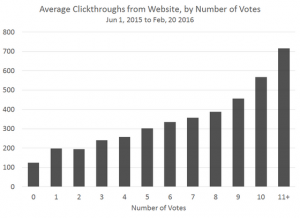This is a summary of links featured on Quantocracy on Thursday, 04/28/2016. To see our most recent links, visit the Quant Mashup. Read on readers!
-
What You Should Remember About the Markets [Dual Momentum]Because I have been an investment professional for more than 40 years, I sometimes get asked my opinion about the markets. These questions usually come from those who invest without a systematic approach toward investing. Here are some typical questions and answers: Question: How much do you think the stock market can drop? Response: 89% Question: What?!! Response: Well, that is the most it has
-
How Different Are These Things From One Another? [Blue Event Horizon]In an earlier post I was looking at distance measures for clustering. In a still earlier post I had referred to analyzing hedge fund regulatory data using clustering to try to put the funds into groups by inferred strategy. I had to solve a problem with clustering that has being bothering me for a while: how do you measure distances between observations when the data is sparse? In my case the
-
Facts, Fiction, and Merger Arbitrage [Alpha Architect]Investors love to chase after the next big thing, as investment strategies and styles come in and go out of vogue. The latest object of investor infatuation may be a revitalized interest in merger arbitrage. Consider this bloomberg headline: Hedge Fund Investors Have Fallen in Love with Merger Arb (Again). It would appear that merger arbitrage is a hot strategy once again. But while it
-
K-Means never fails , they said [Quant Dare]It is known that data mining algorithms are not perfect and they can fail under certain conditions. K-Means is an example of that triviality but there is a good alternative, K-Medoids. In a previous post, Machine Learning: A Brief Breakdown we already mentioned that K-Means is the cluster analysis algorithm par excellence and it is one of the most important data mining and machine learning
-
Optimum Asset Allocation using Correlation [Milton FMR]The concept of diversification is based on the concept that a trader can reduce his risk exposure by entering several positions at the same time. The success of a traders portfolio is therefore based on reducing risk rather than maximizing returns. A trader should be able to withstand a string of losses no matter how low the probability might be for a large string of losses. When testing our
